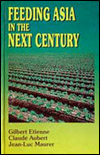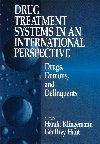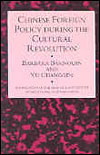Articles et ouvrages spécialisés – 1998
|
|
|
| Feeding Asia in the next century (lien avec le site de l’IUED) Gilbert ETIENNE, Claude AUBERT et Jean-Luc MAURER Macmillan Ed., 97 pages, 1998, CHF 15.- Question principale de cet ouvrage: comment au siècle prochain nourrir les principaux pays d’Asie: Chine, Inde, Pakistan, Bangladesh? Ce livre examine les potentialités et les limites de la production agricole, les investissements publics indispensables pour maintenir l’agriculture et les infrastructures hydrauliques. |
 |
|
|
|
| Partnerwahl und Heirat im gegenwärtigen China [Choix du partenaire et mariage dans la Chine contemporaine] QIN Mingrui Regensburg, Roderer Verlag, 1998, 180 p. avec bibliographie et lexique. M. QIN Mingrui est un sociologue chinois qui a fait une partie de ses recherches lorsqu’il se trouvait en Suisse. A côté de travaux sur la paysannerie chinoise(*), il s’est intéressé au mariage dans la Chine d’aujourd’hui ; il a publié, en 1998, une étude passionnante et remarquablement documentée. Du même auteur : |
 |
|
|
|
| The Trading Crowd. An Ethnography of the Shanghai Stock Market Ellen HERTZ Cambridge, Cambridge University Press, 1998, 238p. (avec un glossaire chinois-anglais, une abondante bibliographie et un index) Depuis 2004, Mme Ellen HERTZ est professeure et directrice de l’Institut d’ethnologie de l’Université de Neuchâtel. Auparavant, chercheuse à l’Institut d’anthropologie et de sociologie de l’Université de Lausanne. Adresse de contact: (texte de présentation du livre) |
 |
|
|
|
| Drug Treatment and Public Security in the People’s Republic of China WANG Zhengyan, Gérald BÉROUD, CHENG Maojin et CHEN Shirong in Drug Treatment Systems in an International Perspective, Thousand Oaks, SAGE Publications, 1998, pp. 253-262. « Historical Background Drug consumption in China is still a very sensitive issue. In the 19th century, the drug traffic imposed by outside forces caused two opium wars between the Qing dynasty and some Western countries and led to strong control of China by those powers. Opium addiction reached epidemic proportions, much more prevalent than today, and the Imperial Court, and afterwards the Republic of China, could not act effectively on what was a disastrous situation. Opium consumption was one of the main causes of the country’s poverty, weakness, and backwardness. Before the constitution of the People’s Republic of China in 1949, there were about 20 million drug addicts (Wang Z., 1995a, 1995b). The new government introduced new laws to stop the production, traffic, sale, and consumption of drugs and, within 3 years, almost completely stamped out these practices. However, drug abuse has been rising steadily since the late 1970s, owing to the economic reform and the open-door policy of the Chinese government, social and cultural changes, and the large amount of opium and heroin produced in the Golden Triangle (Myanmar, Thailand, Laos) and smuggled into the Chinese territory. Excluding industrial and agricultural loss, the annual cost of the drug problem is estimated to be more than 10 billion yuan (US$1.4 billion; Beijing Information, 1996). Today, the drug problem is one of the country’s most important social and political issues. » Télécharger cet article au format PDF (17K) Sur ce thème, voir aussi :
|
 |
|
|
|
| Psychology at Chinese universities and in Chinese society YUE Guoan (1), Meinrad PERREZ (2) & HAN Xiulan (1 et 2) Journal suisse de psychologie, Volume 57, 1998, Cahier 3, Editions Hans Huber, Berne 1 Nankai University of Tianjin 2 Université de Fribourg, Suisse Résumé « The following contribution gives a short introduction to Chinese psychology, history, psychological research and teaching institutions and student selection for universities. After a brief overview of the theoretical traditions and contemporary trends in general and experimental psychology it focuses in more detail on the recent developments in clinical and medical psychology. Research domains, academic training in clinical psychology and its applications in modern China are discussed with special reference to psychotherapy and counselling. » |
|
|
|
|
| Mémoire sur les études chinoises – à Genève et ailleurs Jean François BILLETER, Genève, Librairie du Rameau d’Or, 1998, 95 p., 15.- Commentaires de SinOptic Un bilan autant qu’un constat après une vie consacrée à enseigner la langue et la culture chinoise. Sa lecture vous éclairera sur les difficultés des études chinoises dans notre pays, sur les obstacles rencontrés et sur le persistant manque de moyens pour développer une formation plus complète et adéquate. Face à une domination de plus en plus criante de la logique marchande, le professeur BILLETER, sinologue et titulaire durant des années de la chaire d’études chinoises de l’Université de Genève, ne baisse pas les bras, mais propose diverses possibilités, car bien qu’à la retraite, la suite lui importe… Pour prolonger la réflexion, voici plusieurs articles sur le même thème.
Autres ouvrages de Jean François BILLETER, professeur honoraire de l’Université de Genève et fondateur des études chinoises dans cette université:
|
 |
|
|
|
| Chinese Foreign Policy during the Cultural Revolution Barbara BARNOUIN et YU Changgen, Chinese Foreign Policy during the Cultural Revolution, Kegan Paul International, 1998, 252 p. ISBN 0 7103 0480 X Présentation de l’ouvrage dans le site de HEI : « How did the Cultural Revolution influence the day-to-day functioning of the Chinese Ministry of Foreign Affairs? Which personalities struggled to play a major role in determining China’s diplomatic course? To what extent was China’s foreign policy steered by the years of internal factionalism, turmoil, and upheaval? Barbara Barnouin and Yu Changgen explore the tortuous chains linking China’s internal policies to its external behavior. Focusing on the latter phase of the Cultural Revolution, the authors highlight the contradictions of a period that was marked by incendiary rhetoric about threats of the outside world and increasing concern over China’s isolation on the world stage. Playing close attention to China’s diplomatic ties with the United States, the Soviet Union, and Japan, the study examines the practical considerations that led China to open up relations with the West, even while increasing radicalization ran rampant at home. Balanced and comprehensive, Chinese Foreign Policy During the Cultural Revolution combines rich oral history with Chinese and Western sources. It is an important reassessment of a significant period in Chinese history. » Mme BARNOUIN a été chercheuse au Centre de recherche sur l’Asie moderne (devenu le Centre d’études asiatiques). En 1993, elle a aussi publié avec YU Changgen, Ten Years of Turbulence: The Chinese Cultural Revolution, Kegan Paul International, 370 p., ISBN 0 7103 0458 7. |
 |
|
|
|
| Au cœur de la politique chinoise : les débuts de l’ère Deng Xiaoping Michel HAMMER, Genève, Institut universitaire de hautes études internationales, Working Papers #98/1, 1998, 114 p. |
|
|
|
|
| The establishment of diplomatic relations between Switzerland and the people’s Republic of China: an analysis of the Swiss side of the story> Nicole Françoise STUBER-BERRIES, mémoire, Université de Genève, 1998 |
|
Modification de la page le 29.01.2025
